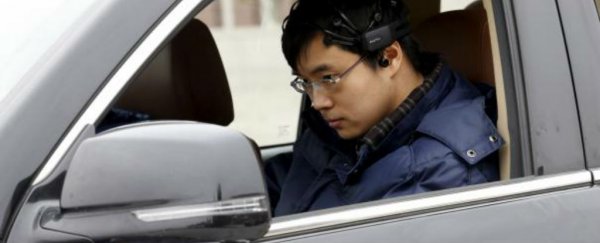While we wait patiently for fully autonomous, self-driving cars to go on sale to the general public, our vehicles remain under human control for the time being - but scientists in China have come up with a more futuristic method of getting from A to B. Using special mind-reading headgear, their new car can be made to move forward and backwards using nothing more than a few concentrated thoughts.
A total of 16 sensors on a specially developed brain cap are used to harvest electroencephalogram (EEG) signals from the mind of the driver, which are then translated into commands for the high-tech car. The researchers behind the project say development has taken just two years, and it was originally intended to help disabled drivers get around by themselves.
Rather than compete with their mind-controlled car, self-driving technology would actually complement the new system. "Driverless cars' further development can bring more benefits to us, since we can better realise functions relating to brain controlling with the help of the driverless cars' platform," lead researcher, Duan Feng from Nankai University, told Reuters.
"In the end, cars, whether driverless or not, and machines are serving for people," he said. "Under such circumstances, people's intentions must be recognised. In our project, it makes the cars better serve human beings."
It's not clear if or when something like this might appear in a vehicle sold commercially, but it's another avenue for engineers to explore as we move away from the traditional manual approach of steering wheels and foot pedals. According to the team behind the new system, thoughts would only need to be applied sporadically - when changing lanes or speeding up, for example - so drivers wouldn't have to think exclusively about controlling the vehicle while on the road.
As yet, there's no mechanism for turning the car in either direction, though it's possible to lock and unlock the car using the concentrated power of the brain. China's Great Wall Motors has been working in partnership with the Nankai University researchers to get the first test vehicle in operation.
"There are two starting points of this project," said one of the team, Zhang Zhao. "The first one is to provide a driving method without using hands or feet for the disabled who are unable to move freely; and secondly, to provide healthy people with a new and more intellectualised driving mode."
Even in its limited form, it's another awesome development for scientists working in the field of mind control, and some form of this technology could well be fitted as standard in our automobiles in the not-so-distant future. Even if you don't control the steering with your mind, you might at least be able to switch the radio stations.
